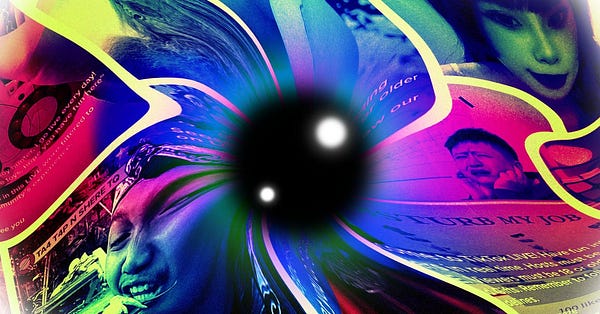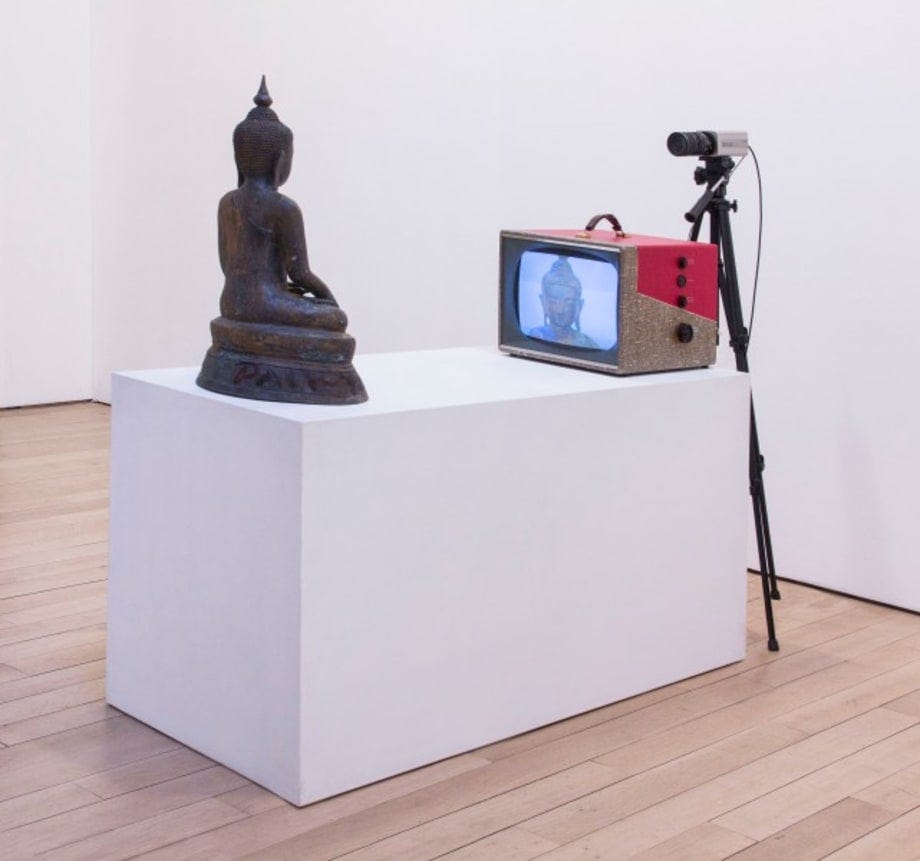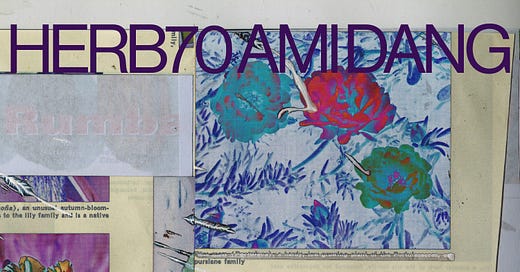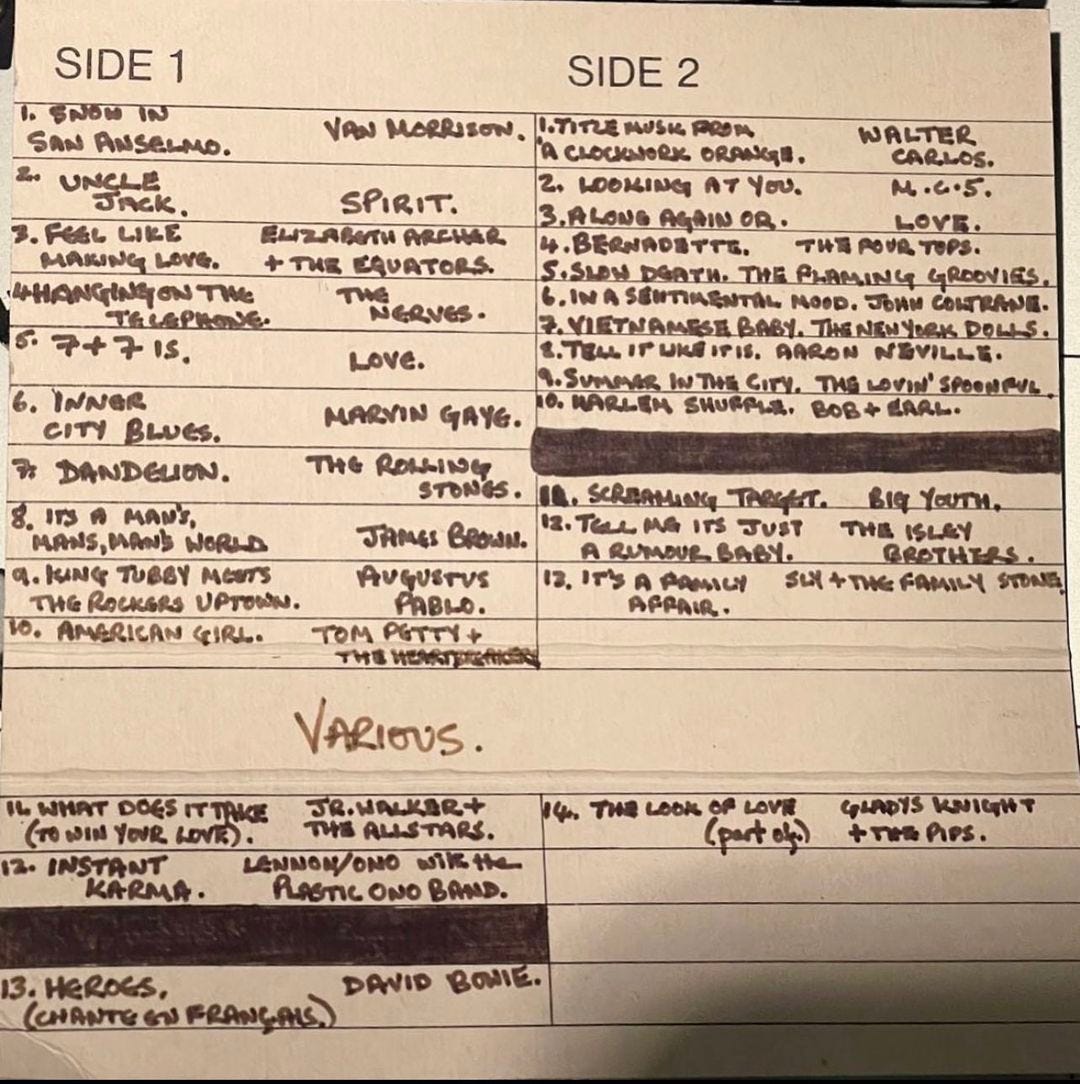Herb Sundays 70: Ami Dang
The Baltimore-based sitarist, composer, and electronic producer shares a mix of favorites, plus works from friends and allies.
Herb Sundays 70: Ami Dang (Apple, Spotify, Tidal). Art by Michael Cina.
“When I put together a playlist (especially because I don't make them very often), I usually include the sounds of friends, collaborators, and artists I've met through my journey creating and performing music. Amy Reid is playing keys and singing backup vocals in my live band. Smoke Bellow and Horse Lords are tireless music creators and performers and dear friends of mine from the Baltimore music scene. Both bands deserve to be heard more—so go check them out! Mario Diaz de Leon and I are longtime friends who went to college together at Oberlin and have been inspired by similar palettes of experimental, classical, pop, electronic, and everything in between. Add a dash of soothing and joyful Indian classical flute and sarod from Hariprasad Chaurasia and Aashish Khan and some longtime favorites from This Mortal Coil and Francis Bebey. Finally, I close out the mix with Christa Ebert, a Portland (ME)-based artist who is also my coworker at New Music USA.”
Amrita “Ami” Kaur Dang is a South Asian-American vocalist, sitarist, composer, and producer from Baltimore. Her sound blends elements of North Indian classical, noise/ambient electronics, beat-driven psych, and experimental dance pop. The work references her hybrid identity as a first-generation South Asian-American, her Sikh upbringing and musical education, as well as the chaos and spirituality of both the landscapes of Baltimore and urban India.
Picking up her first sitar when she was twelve years old, Dang studied North Indian classical music (voice and sitar) in both New Delhi and Maryland. She cites the work of Ravi Shankar and Philip Glass as forebears in her musical practice and seeks to gel contemporary experimental, pop, and electronic music with the sounds of South Asia—through vocals and sitar, ragas, and sampling. This rigor has allowed for collaborations with artists such as Animal Collective, William Cashion (of Future Islands), James Acaster, and Thor Harris, and in supporting live roles for Beach House, black midi, Grimes, and Florist.
I was struck by Dang’s 2019 album Parted Plains (Leaving Records) and its balance of light and dark motifs. Her music has an intensity that is rooted but fierce in its passion and hypnotic tone. I had become more aware of and keen on sitar-driven music since my trip to India six years ago, and am also generally a fan when artists can utilize traditional instruments in new ways. You realize you often only get music from outside of the Western canon the way I (and perhaps many folks) have received Indian and generally Eastern music, through the lens of American and British artists using it as a cultural signifier.
Dang’s melodies, voice, and instrumentation often take center stage but her lyrics are poignant and sharply political. For her 2022 song "A Muted Crime” Ami writes that the song in a wider context pertains to “the current struggle in the US for access to abortion and better outcomes for reproductive health justice. The song, like many on the album, is a sort of call to action for people to rise up and fight for rights and freedoms, especially here with regards to the control that the state has over our bodies.” I should mention that Ami is on tour his Spring.
One of the things that struck me around the rollout of Dang’s 2022 album, The Living World’s Demands were some notes around the release of her single “Sensations” relating to her mental health journey.

We think of social media, and media culture in general, as the ultimate manifestation of “me culture” but Dang actually gets the bull by the horns, that it is in fact the immolation of the self for most users, who serve as spectators or micro-producers in the grip and service of bigger personalities. The din of modern media, though we assume it is about vanity, due to the presumed reality and amateur bent, serves as a surrendering of one’s inner life to the aggregated shout, and the morass that follows the flood, drowning out one’s own identity.

It is commonly held that social media can be dangerous as a comparative vehicle, but I would argue more recent innovations belong to something more intense, maybe better described as recruitment to ideology. Before you throw a flag and call me out, yes, I am indeed a relatively frequent social media consumer/user and I remain in awe of its power to connect ideas, big and small, and create relationships out of affinities. I think the issue is not a macro-level evil intent (though, we have good reason to believe that too) but more in fact how “good” it feels to consume, both chemically and otherwise.

I also applaud Dang’s bravery in sharing the deeply personal with no lens of irony. Though it’s common parlance now to use memes now to bemoan our socially depressive moods or hint at our DSM-IV diagnoses, this approach serves as a dodge as well. I asked Ami, with her blessing, to elaborate on her post:
“When I began writing Sensations, I was in a depressive state, something I've struggled with since I was 13 or probably earlier. Even while writing the song, I hadn't parsed out if or how I would talk about the subject matter, an issue that I've kept to myself for so long. But the conversation around mental health has changed drastically in recent years! Those of you of a certain age have probably noticed this—I wouldn't have dared speak publicly about my struggle with depression and suicidal ideation in my 20s or teens, but now, it just doesn't seem like such a big deal to talk about it. The irony is that, when I was a teenager (and up through my early 20s), I thought that feeling depressed and suicidal was "normal." To some extent, I figured that everyone went through this and dealt with it however they needed to, which is why I didn't seek therapy until I was much older, at 25. To put a name on it (Persistent Depressive Disorder or something like that) was actually really comforting and validating.
The song explores a specific headspace I was stuck in while in this mental feedback loop of thoughts like: why am I so upset? Does anyone understand me? Why do I feel so alone? It also explores the effect of media on our psyches and the prevalence of emotional voyeurism. Because we are constantly surrounded by stories of other people (fictional and non-fictional), we are often—consciously or not—leeching off of someone else's feelings to break up either the lack of an interesting emotional landscape in one's own life or as an avoidance mechanism to one's own life experiences, emotions and trauma. At its worst, emotional voyeurism is an avoidance mechanism, and we channel our own emotions through the media we consume, thereby filtering those emotions through the experience of another story so that we don't have to directly confront or process how we feel about our own lives.”
Another angle on Dang’s words came via a great piece by the accomplished young writer Kieran Press-Reynolds (coincidentally, the child of Herb 32, Simon Reynolds) about a dark night of the soul scrolling TikTok Live. It chronicles the absurdity of the platform and its unregulated chaos in service of not only the emotional need but for financial sustenance.


The decentralized structure of TikTok and its chaotic algorithm incentivizes people to make clickbait to get noticed. Rather than gradually building up a fanbase like on Twitch, TikTok's vortex of content means live-streaming creators might have to do whatever it takes to hook viewers and coax donations…Rather than gradually building up a fanbase like on Twitch, TikTok's vortex of content means live-streaming creators might have to do whatever it takes to hook viewers and coax donations.
It’s not all grim, you have to have a sense that the farther we push one say, the further we push the other. Thanks to the [SIC Weekly] Substack I read about the creation of a Luddite club, formed by teens giving up their smartphones to wrest their lives back.
I’m confident we will look back at this era and marvel at the permissions and privacy we gave away so freely, let alone the time we idled away. Until then we grapple with our own identity, ideas, and joy, against the blaze of a thousand fires of uncertain ends.

From The Field.
Herb Sundays FanFic, but real: Tracklist for a mixtape Mark Hollis gave to producer Gareth Jones, 1980 (c/o Linus Booth) seen below. Anyone wanna make this mix below on a service of their choice? In the meantime, apparently, these cuts (Spotify) are all Mark-endorsed songs.







